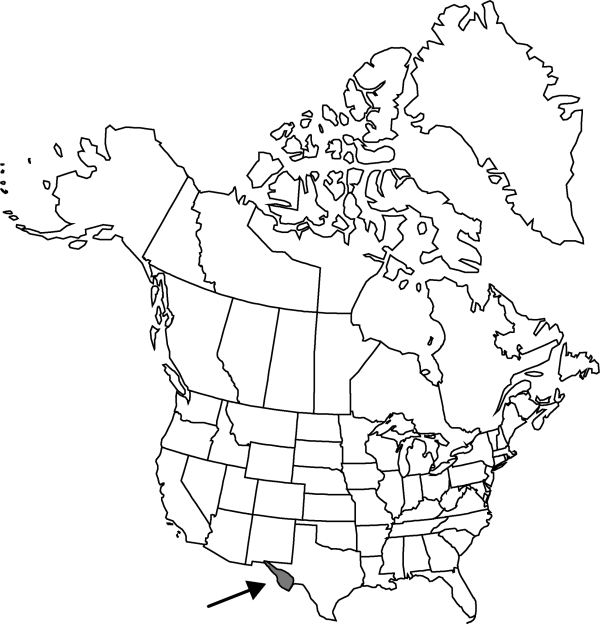Coryphantha dasyacantha
Cactography 1926(1): 5. 1926.
Plants usually unbranched (rarely 2–5 branches), white or brown bristly stem. Roots diffuse (rarely short taproots). Stems spheric, becoming short cylindric in age, 4.5–10(–17) × (2–)3–4.5(–6) cm (1–3 × 2–5 cm in Davis Mountains, Texas); tubercles (4–)7–8(–12) × 3–5(–7) mm, moderately soft; areolar glands absent; parenchyma not mucilaginous, medullary vascular system absent. Spines 26–42 per areole, white with red-brown to nearly black tips (brown to reddish brown with black tips in Davis Mountains); radial spines 21–31 per areole (12–22 in Davis Mountains), 6–9(–10) mm; subcentral spines several, appressed; central spines (3–)4–9(–11) per areole (2 in Davis Mountains), spreading, straight, longest spines 12–17 × 0.2–0.3(–0.4) mm. Flowers nearly apical, 15–30 × (10–)13–15(–22) mm, sterile distal part of flower tube 0–2 mm, shorter than stamen-bearing part; outer tepals conspicuously fringed; inner tepals 14 per flower, midstripes pinkish to brown or brownish green, proximally white, (7–)8–10(–12) × 1.5–3 mm; outer filaments white or colorless; anthers bright yellow; stigma lobes 4(–6), dark green to bright yellow, 1–2.5 mm. Fruits bright red, clavate, cylindric, or narrowly ellipsoid, (7–)13–27(–35) × 3.5–6(–7) mm, not very succulent; floral remnant strongly persistent. Seeds black, subspheric, 1–1.2 mm, pitted. 2n = 22.
Phenology: Flowering Mar–Jul; fruiting (May-)Jun–Aug, ca (1 1/2)-(2 1/2) months after flowering.
Habitat: Desert scrub with Larrea or Prosopis, on limestone, igneous rocks, gravelly bajadas, silty flats
Elevation: 800-1900 m
Discussion
Many published photographs and specimen citations purported to represent Coryphantha dasyacantha reflect misidentifications. Ripe fruits, with their strongly persistent floral remnant, provide the only simple way to distinguish C. dasyacantha from C. duncanii. The black fresh seeds of C. dasyacantha and related species usually provide immediate distinction from C. tuberculosa, C. sneedii, and C. vivipara, which have differently shaped, bright reddish brown fresh seeds. In addition, the greenish stigma lobes of C. dasyacantha, C. duncanii, C. chaffeyi, C. pottsiana, and certain Mexican taxa contrast with the violet or white stigma lobes of C. vivipara, C. sneedii, C. alversonii, and C. hesteri. Vegetatively, C. dasyacantha always is distinguishable from C. vivipara and C. sneedii by its lack of the unusually large druses described under 20. C. sneedii.
Selected References
None.
